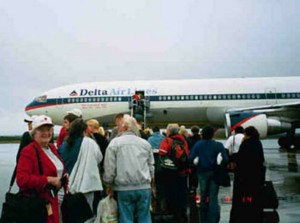Lately schools seem to be “giving out suspensions like they’re pencils,” says Jacqueline Burt at The Stir, with arguably well-meaning students being punished for a smorgasbord of what critics are calling trite and ridiculous reasons, ranging from giving hugs to Tebowing.
Here are a plethora of examples:
A creative haircut. Patrick Gonzalez, a 12-year-old student at Woodlake Hills Middle School in San Antonio, recently received an in-school suspension after his enthusiasm for NBA star Matt Bonner went too far. Gonzalez had the San Antonio Spurs forward’s likeness shaved into his hair, which school officials claimed was a violation of the school dress code. To return to school, Gonzalez had to shave his head bald, removing traces of the tribute. But all was not for naught: Bonner was so flattered by Gonzalez’s devotion that he called it “the nicest thing a fan has ever done for me,” and sent the middle schooler playoff tickets and autographed swag.
Hugging a friend. Florida middle schooler Nick Martinez thought nothing of giving his best friend, a female student, a quick hug between classes – until he was suspended for the embrace. As it turns out, Southwest Middle School in Palm Bay has a strict no-hugging policy, in order to prevent harassment and keep students focused on learning.
Tebowing. Matt Bonner isn’t the only athlete indirectly responsible for a student’s suspension. A group of high schoolers in Riverhead, N.Y., was suspended after mimicking NFL quarterback Tim Tebow’s “Tebowing” stance in the hallway of Riverhead High School. Four boys struck the kneeling pose between classes, inspiring upwards of 40 other classmates to join in. School officials cited the quartet for causing a traffic jam in the hallway, an apparent violation of school rules.
Growing hair for charity. Michigan teen J.T. Gaskin is a leukemia survivor, and he knows firsthand the crucial confidence that a wig from the Locks of Love charity can give an ailing cancer patient who has gone bald. After hearing that a friend’s sister had been diagnosed with cancer, Gaskin decided to grow the 10-inch ponytail required by Locks of Love for a donation in her honor. But Gaskin was only able to grow his hair about 2.5 inches before he was suspended by his school, Madison Academy, for violating a dress code stipulation that boys’ hair be “off the collar, off the ears, and out of the eyes.” Despite the punishment, Gaskin said he has no plans to stop growing his hair in preparation for a donation.
Singing a hit song. Hip-hop group LMFAO’s popular single “I’m Sexy and I Know It” is “so catchy, even a 6-year-old boy can pick it up, says Amanda Sloane at HLN TV. That’s what happened in Colorado, where young D’Avonte Meadows started singing the tune – which includes lyrics like “Girl, look at that body” – to a classmate in his school’s lunch line, and was promptly suspended for sexual harassment. While the lyrics were undeniably inappropriate, it’s easy to see how the student is familiar with the track. After all, it’s featured in a frequently aired M&M’s commercial, and was parodied by Elmo on Sesame Street.
Calling a teacher ‘cute’. A 9-year-old North Carolina boy was also suspended for arguably dubious claims of sexual harassment, only his offense was calling a teacher “cute.” A substitute teacher overhead Emanyea Lockett give out the compliment chatting with a friend and reported him.
Chivalry. A student at Southampton Middle School in Virginia was given a one-day suspension for holding an exterior door open for an adult who had her hands full. The student knew the adult, but the school has a policy that prohibits letting a visitor in before he or she is vetted by a security camera. According to the school district’s superintendent, the strict rule is essential to ensure that the high-tech security system is effective.
Disarming a would-be shooter. In February 2013, three high school students were suspended from school for disarming a would-be shooter on the school bus. The teens, all students at Cypress Lake High School in Fort Myers, Florida, were on a school bus when two students got into a heated argument. One of them then pulled a loaded .22 caliber revolver on the other, and aimed it at his head. The three unnamed students didn’t wait to watch someone die. Instead, they tackled and disarmed the suspect, who was later arrested for aggravated assault with a deadly weapon. The three students who prevented a possible murder did not receive a hero’s welcome at their school. Instead, they were suspended for the remainder of the week because they were involved in a gun “incident.”
Brandishing a pizza slice. A ten-year-old boy at the David Youree Elementary School in Smyrna, Tennessee, was punished with social isolation at lunch time because he brandished a pizza slice at his school friends. It wasn’t just any pizza slice, of course. As Nashville’s News 2 Investigates reported, it was a half-eaten slice of pizza that vaguely looked like a gun. When a fellow student commented on the slice’s resemblance to a gun, the 10-year-old picked it up and pretended to fire shots into the air. School officials suspended him.
Strawberry mountains. Josh Welch, 7, got in trouble at Baltimore’s Park Elementary School when he tried to make a strawberry mountain. Josh, who has ADHD decided that it would be fun to mash up his strawberry tart and sculpt a mountain. Being only 7, things didn’t go quite as planned. As Josh explained, “All I was trying to do was turn it into a mountain but, it didn’t look like a mountain really and it turned out to be a gun (kind of).”
Accidental teacher touching. Seventh grader Je’Terra Bowie was suspended for 180 days from Wilkinson Middle School in Detroit for allegedly accidentally touching her teacher as she reached back to stretch, WDIV reports. “I didn’t know she stopped behind me,” Bowie told the station. “She stopped, and I stretched back. I turned back and said, ‘Sorry. I didn’t mean to.'” After the teacher demanded Bowie leave the classroom, other students wrote letters asserting the incident was an accident. The teacher maintains the poke to her inner thigh was not an accident.
Check what you buy. Jack Persyn, 13, was in chess club before class when he discovered a short knife in the bag he brought to his Georgia school, station WXIA reports. Persyn’s aunt had bought the bag from a yard sale, and gave the purchase to the teen without checking inside first, the Atlanta-Journal Constitution reports. After Persyn told his Lanier Middle School teacher that he accidentally brought the weapon to class, the teen received four days of in-school suspension, a punishment his father Bill Persyn says is excessive.
“There was never a safety issue,” Persyn told WXIA. “No harm was done. It was a genuine honest mistake, yet he got pulled out of class for four days. I can see a one-hour detention if they had to do something, but this is nonsensical.”
Failure to report bullying. Essance McDougald, a student at Lithonia High School in Lithonia, Ga., claims she was suspended for not reporting to school officials that she was being bullied, CBS Atlanta reports. McDougald alleges two female students sent her threatening letters and locked her in a school bathroom.
WSBTV reports that the student wrote a three-page letter to her school counselor, but was still suspended for two days. McDougald’s grandmother told WSBTV that since her granddaughter is too afraid to return to school, she is considering home-schooling the teen.
Pink (as for cancer) hair. South Carolina mother Denise Sargent is upset that her daughter Rheanne was suspended for dying her hair pink to support National Breast Cancer Awareness month. The Belton Middle School student tells WYFF that she wanted to recognize those who have battled cancer. But the school’s assistant principal said she was violating the dress code, which prohibits non-human hair color, and placed Rheanne in in-school suspension.
The butter knife. A Massachusetts middle school student was suspended after she brought a butter knife to school in her lunch, Fox 25 Boston reports. According to the 13-year-old’s mother, Morgan LaPlume was taken to the office and handed a one-day suspension after Wamsutta Middle School’s assistant principal spotted the butter knife, the Sun Chronicle reports. LaPlume packed the butter knife with her lunch in order to cut a pear, explaining to Fox 25 that she can’t bite into the fruit because of her braces.
 Storage unit companies are finding business is booming at a time when other commercial real estate sectors are still mostly flat. Investors are buying up shares in storage unit companies too; Extra Space Storage Inc. saw its stock rise 33 percent in the past year. The Salt Lake City-based company reports that 94.5 percent of its space was occupied at the end of the second quarter, up from 92.1 percent one year prior. Public Storage, which is the largest publicly-traded storage firm, reported a 7 percent increase in rental income year-over-year.
Storage unit companies are finding business is booming at a time when other commercial real estate sectors are still mostly flat. Investors are buying up shares in storage unit companies too; Extra Space Storage Inc. saw its stock rise 33 percent in the past year. The Salt Lake City-based company reports that 94.5 percent of its space was occupied at the end of the second quarter, up from 92.1 percent one year prior. Public Storage, which is the largest publicly-traded storage firm, reported a 7 percent increase in rental income year-over-year.
 will offer a plethora of computers – Macs and PCs – along with high-speed Internet access, 3D printers, digital TVs and desktop work stations equipped with dual monitors. Rounding out the offerings will be the latest software from basic Photoshop to advanced computer-assisted drawing. Do Space will include a 3D printing lab, surrounded by glass, where people can learn how to use the printers and make inventions come to life.
will offer a plethora of computers – Macs and PCs – along with high-speed Internet access, 3D printers, digital TVs and desktop work stations equipped with dual monitors. Rounding out the offerings will be the latest software from basic Photoshop to advanced computer-assisted drawing. Do Space will include a 3D printing lab, surrounded by glass, where people can learn how to use the printers and make inventions come to life.





